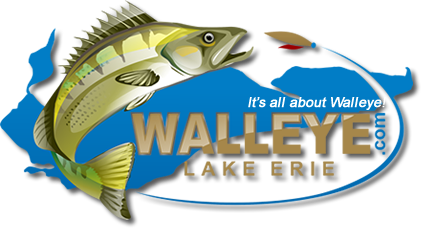 Thanks: 0
Thanks: 0
 Likes: 0
Likes: 0
Results 1 to 9 of 9
Threaded View
-
10-19-2011, 06:50 PM #4

Here is a web site that may enlighten us all as to why GLSM needs cleaned up. Part of that poluted water flows out of GLSM and into the Maumee River Water Shed and ends up in Lake erie. Now add to that the runoff of all the farm land in Indiana and Ohio that is drained into Lake Erie besides that that comes from GLSM and you can see that there is a real potential to seriously damage our great Lake Erie. Take the time to run a search on the Maumee water shed and see how many square miles of land is drained into Lake Erie. Now add that to the already vile water which by the way is concentrated that flows out of GLSM. What is your conclusion?
The following material can be found in the Link that I have provided and I have high lighted the important part.
http://www.clickfindbuyersguide.com/..._st_marys.html
Grand Lake St. Marys is located in west central Ohio. The city of St. Marys is located near the northeast corner of the lake and Celina is on the northwest corner. State Routes 29, 364, and 703 provide access on the north side of the lake; State Route 364 on the east; State Routes 219 and 703 on the south; and US Route 127 on the west.
It is an artificial lake The lake covers 13,500 acres (55 km˛) in Auglaize and Mercer counties.
Grand Lake St. Marys is the largest inland lake in Ohio in terms of land area, but is extremely shallow, with an average depth of only 5 to 7 feet (1.5 to 2 m) with a soft bottom of silt. Some isolated areas of sandy or clay bottoms exist where wave action keeps the bottom cleaner. Lots of rock rip rap has been added to reduce shoreline erosion; these rocky shorelines provide cover for several species of fish. Numerous boat docks, shoreline brush, and fallen trees provide cover for fish. It was constructed 1837-1845 as a reservoir for the Miami and Erie Canals. Two earthen dams were built on the headwaters of two major drainage systems flooding the area between them. The spillway on the west end discharges water into the Wabash and Ohio River drainage systems; water from the east end spillway flows into the St. Marys River, and from there into the Maumee River and Lake Erie. In the 1890's oil was discovered in the area, and oil derricks were set up in the lake. These were the first off-shore oil rigs ever constructed.
Similar Threads
-
Ran acrossed this list of nunbers,thought they may help someone.
By Fishin Crazy in forum Western Lake Erie Fishing REPORTSReplies: 0Last Post: 08-27-2013, 05:39 PM -
Ran acrossed this list of nunbers,thought they my help someone.
By Fishin Crazy in forum Western Lake Erie Fishing REPORTSReplies: 0Last Post: 08-27-2013, 05:37 PM -
I thought boating season was over
By dlbhaas in forum Western Lake Erie Fishing REPORTSReplies: 7Last Post: 01-04-2013, 08:52 AM -
Just your thought
By eyeassassin in forum Western Lake Erie Fishing REPORTSReplies: 8Last Post: 06-13-2011, 04:09 AM -
need some help guys
By Big Daddy in forum Western Lake Erie Fishing REPORTSReplies: 2Last Post: 04-30-2008, 06:18 PM










 Reply With Quote
Reply With Quote

The green buoy is on the west tip...
Perch 9/30